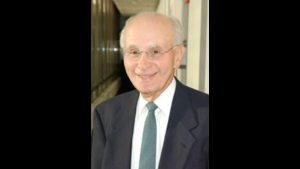Yes We (All) Can
Published November 11, 2015
At the General Assembly of the Jewish Federations of North America on Monday, Jewish philanthropist Les Wexner, CEO of L Brands Inc. and founder of the Limited clothing chain, talked about the responsibility of leadership and how it applies to us not only organizationally but personally.
Then Australian social activist Jeremy Heimans, who was a public advocate at age 12, spoke persuasively about new ways to harness power for change. Individuals and movements can bypass traditional institutions to effect certain kinds of participatory transformation, he said.
These notions were on center stage Sunday in St. Louis, when several hundred community members assembled peaceably in solidarity with Israel on the heels of recent weeks of multiple, violent attacks on Jews there.
ADVERTISEMENT
The organization of the rally came not via the local Federation or other groups but instead by individuals who believed in the necessity of such a public show of support. The event was preceded by opinion pieces in the Light addressing the question of having such a public assembly, and who should organize it and, in a sense, own it.
Our community is no different in a variety of respects from those in many cities in which Jewish organizations (federations and otherwise) were recently looked to for leadership in organizing similar events in support of Israel.
But when faced with the absence of that organization from the usual institutional sources, individuals acted quickly and efficiently. Ads, social media and word of mouth spurred the effort to develop the event at LaVerne Collins Park in Creve Coeur.
ADVERTISEMENT
And guess what? It worked, and worked well. The event happened, hundreds came, and the afterglow for having mobilized the community in support of Israel was warm indeed.
It might even be suggested that the vibe feels more personal, is more visceral, than had any agency, Fed or otherwise, taken the lead.
So is there a lesson learned? Sure, even more than one. First, no one can claim exclusive, monopolistic ownership of a cause. And second, the corollary to the first, is that with the right tools, energy and work, anyone can evolve into leadership for a cause that he or she supports.
That doesn’t mean there aren’t limits. Some issues and their solutions require sustained, systematic funding and human resources, both lay and professional, to build effective change over time. Yet even those more traditional means can either explicitly or implicitly encourage grassroots efforts like the rally, which by its mode of organization created a new and exciting energy to link St. Louis and Israel.
Anyone who sees this as a “choice” that one model works better the other, more traditional one, isn’t paying attention. The need for agency leadership remains just as strong as always, to do the sustained and planned work over time so necessary to address issues of Jewish identity, social justice and more.
But the potential is high for a community in which mobilization comes not only in the traditional ways but via new and exciting ones. That’s what happened here, and by stepping up to own the moment, the individuals who organized the rally on Sunday deserve kudos and our thanks.















